Shandy Hall Moths

15 July 2011
12 July 2011 – Two new species
The identification of a Smoky Wainscot (Mythimna impure) and Agriphila straminella take the number of different species found at Shandy Hall to 167. The total will be checked carefully as the number is achieving significance. Mythimna is named after a town on the island of Lesbos and impura, meaning unclean or dirtied, refers to the […]

6 July 2011
5 July 2011 – Brightly coloured petticoats
Another week passes and this post must go up. A Garden Tiger moth (Arctia caja) turned up. What a wonderful moth it is. Arctia from the Greek for ‘bear’ – the hairy larva is called the ‘wooly bear’ –and caja is taken from a Roman lady’s name (the female of Caius). Linnaeus used feminine names […]
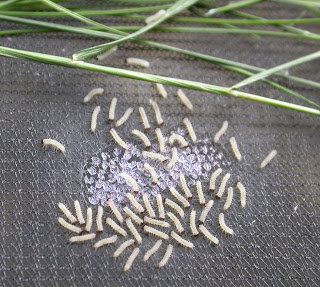
6 July 2011
27 June 2011 – Hairy larvae everywhere
They hatched. Here they are like a small herd of buffalo all off in search of food. Clover turned out to be the tastiest of the varieties presented. Getting the caterpillars off the mesh and into a container was easier than it looked and now they are growing fast. Dave Chesmore thinks they may be […]
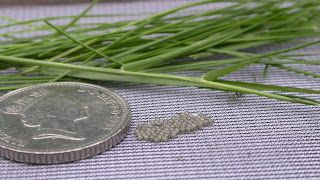
21 June 2011
21 June 2011 – Sons of egg blog
Unfortunately very little has turned up in the trap of late. The cool nights seem to be keeping the moths at bay. Lots of Beautiful Golden Ys and Heart and Darts; the odd Brimstone and the first Broad-bordered Yellow Underwings but nothing special. However, the cluster of eggs has now changed colour from pale emerald […]
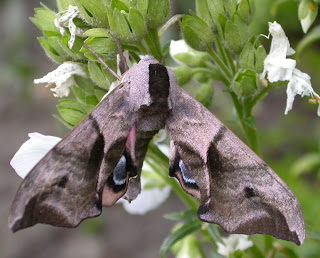
13 June 2011
13 June 2011 – Bringer of good tidings
The Eyed Hawk-moth (Smerinthus ocellata) glared at me when I tried to move it from the trap to find a more appropriate background for a photograph. Smerinthus meaning ‘thread’ is a possible link to the Death’s Head Hawk-moth (Acherontia atropos), as the thread referred to could be that of Life itself, woven by the Fates […]
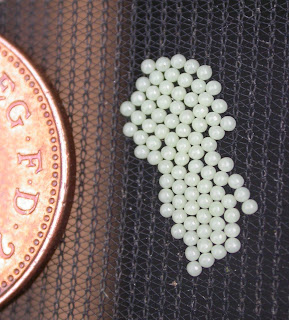
7 June 2011
7 June 2011 – Egg Blog
How many? 85 seems to be about right. Laid with the precision of a machine-gun but on the outside of the moth cage not on the inside. I thought the White Ermine or the Green Silver-lines might have been responsible but they didn’t make contact with the outside of the mesh. The last clutch of […]

6 June 2011
3 June 2011 – Lay not up for yourselves treasures upon earth
Epiblema cynosbatella crept in, nearly unnoticed, on 20 May (photo on side panel) and was identified by Dave Chesmore as Shandy Hall’s newest species. 163 in total. Last night was the warmest for a while and the trap was out by 9pm which might explain why the dusk-flying Common Swift was seen this morning. Hepialus […]
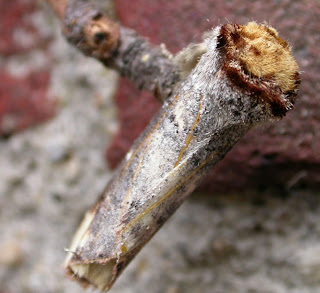
31 May 2011
26 May 2011 – Buff-tip and Elephant Hawk-moth
The Buff-tip (Phalera bucephala, Greek phalaros – having a white patch ; bucephala – bull-headed). Alexander the Great had a horse called Bucephalus so if it had a white blaze on its head, this moth is named after it. At Shandy Hall the Buff-tip never quite makes it to the moth-trap. It is always found nearby […]

23 May 2011
20 May 2011 – Flame Shoulder
Cleaning the moth trap (dead midges and mosquitoes accumulate at the bottom of the trap and form a sort of crisp soup) and then putting it out in the dark last night meant I forgot to put the egg-boxes back in. As a result, this morning’s collection were all tucked beneath the rim that supports […]

19 May 2011
19 May 2011 – Newt emerges
At night the temperature is still chilly. A drive back to Shandy Hall in the evening gives a fair indication of possible moth activity and over the last week hardly any have been seen in the headlights. (I’m sure most moth-trappers travel more slowly at night to avoid collisions. A feathery clout on the windscreen […]

10 May 2011
10 May 2011 – Prominent Prominents
Menophra abruptaria is the Latin name for the Waved Umber. Menophra is derived from the Greek words for ‘moon’ and ‘eyebrow’ and abruptus means ‘broken off’. A collection of words that form another miniature poem. These creatures are so different when at rest in contrast to their flapping, agitated flight. The big lilac tree on the lawn […]
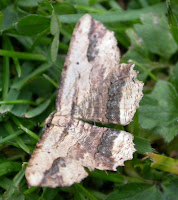
3 May 2011
3 May 2011 – 57 varieties of human being: 6 varieties of moth
The National Gardens Scheme evening attracted 57 varieties of human being but only half-a-dozen different moth species, two of which are photographed here. The White Ermine moth (Spilosoma lubricipeda) – such a beautiful creature – comes readily to light. If the example photographed looks a bit lifeless that is because the moth’s response to being handled […]
Recent Moths
- Rise of the AI Naturalist
- Best Moths for a Haunted Abbey
- The Real and Fake Deaths of Moths
- The Colonizers of Yorkshire
- Glamour in the Dark: Two Newcomers Arrive at Shandy Hall
- 25 July 2023 – Collective Noun for Hawkmoths
- MOTH LIST to August 2023 with links
- 28 July 2023 – TRIPLE New Species Alert!
- 18 July 2023 – A Golden…Plusia!
- 13 July 2023 – Arts and Sciences
- 10 July 2023 – Rise of the Yellow Underwings
- 4 July 2023 – Cold-weather Catch






